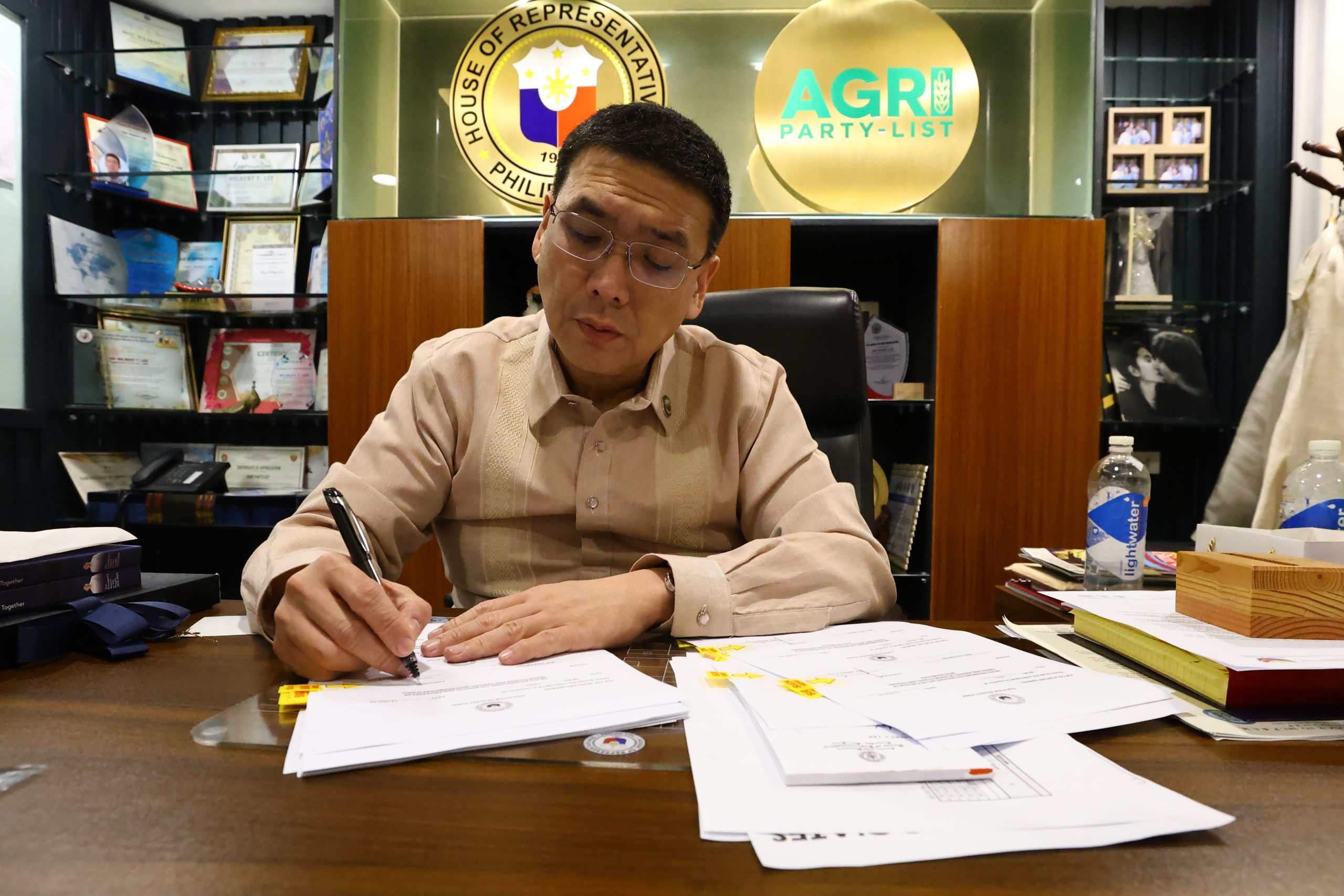Wilbert Lee Agriculture Advocacy
March 24, 2024
Lee To DA: Invest In Research On Climate-Resilient Crop Varieties
AGRI Party-list Rep. Wilbert “Wise” T. Lee urged the Department of Agriculture (DA) to focus on the development of climate-resilient varieties of major crops to mitigate the impact of future occurrences of the El Niño phenomenon.
This, as the DA announced that agricultural damage caused by the intensifying El Niño has already reached ₱1.75 billion, covering more than 32,000 hectares of farm lands and displacing almost 30,000 farmers.
“Panahon na upang pagtuunan natin ng pansin ang pagdevelop ng climate-resilient na palay at mais para maibsan ang epekto ng El Niño sa hinaharap,” Lee said.
“Mayroon nang mga naunang pag-aaral ang IRRI (International Rice Research Institute) sa climate-resilient rice na kayang magtolerate sa extreme climate conditions. We just need to adopt and build on this technology in order for our farmers to benefit from it,” he added.
The IRRI has developed drought-tolerant rice varieties which have been released in several countries including Sahbhagi Dhan in India, the Sahod Ulan in the Philippines, and the Sookha Dhan varieties in Nepal.
The IRRI is also currently studying flood-tolerant rice varieties which have been released and are now being planted in various areas including Swarna Sub1 in India, Samba Mahsuri in Bangladesh, and IR64-Sub1 in the Philippines.
“Mayroon ding pag-aaral ang United States Department of Agriculture (USDA) tungkol naman sa drought-tolerant (DT) corn. I suggest we propose a knowledge exchange of sorts para mapakinabangan nila ang pag-aaral natin sa palay at makuha naman natin ang teknolohiya nila sa mais,” the Bicolano lawmaker said.

DT corn varieties became available to US farmers between 2011 and 2013 after decades of research on drought tolerance by crop breeders and plant scientists.
“We need to utilize and maximize all available agricultural technologies so as to make our farmers—our food security soldiers—more resilient to climate change,” the solon said.
“Kapag hindi na apektado ang ating mga magsasaka sa pagbabago ng klima, tataas ang produksyon at kita nila, at bawas pangamba naman sa ibang mga pangangailangan tulad ng gastos sa pagkakasakit o pagpapa-ospital.”
“Ang dulo nito, makakatulong ang climate resilient crop varieties sa pagkamit ng food security. At kapag natiyak natin ang food security, siguradong Winner Tayo Lahat ,” he added.
The DA earlier announced that eight regions in the Philippines were most affected by the El Niño: Ilocos, Cagayan Valley, Central Luzon, Calabarzon (Cavite, Laguna, Batangas, Rizal and Quezon), Mimaropa (Mindoro, Marinduque, Romblon and Palawan), Western Visayas, Zamboanga Peninsula, and Soccsksargen.
Most affected was Mimaropa, which incurred P770 million damage to agriculture, followed by Western Visayas with ₱560 million; Cagayan Valley, ₱180 million; Central Luzon, ₱158 million; Ilocos, ₱54 million; Zamboanga peninsula, ₱13 million; Calabarzon, ₱7 million, and Soccsksargen, ₱2 million.
Latest Post
Categories
Share on Social Media
- Legislation
- March 24, 2024













